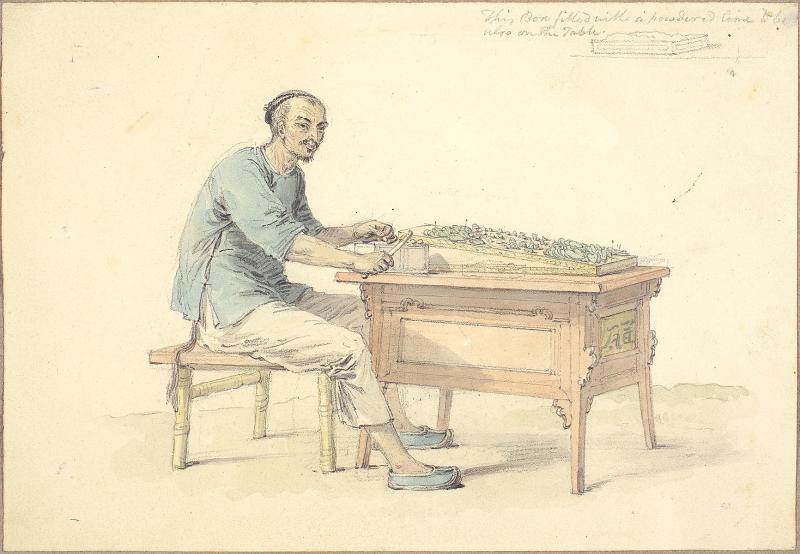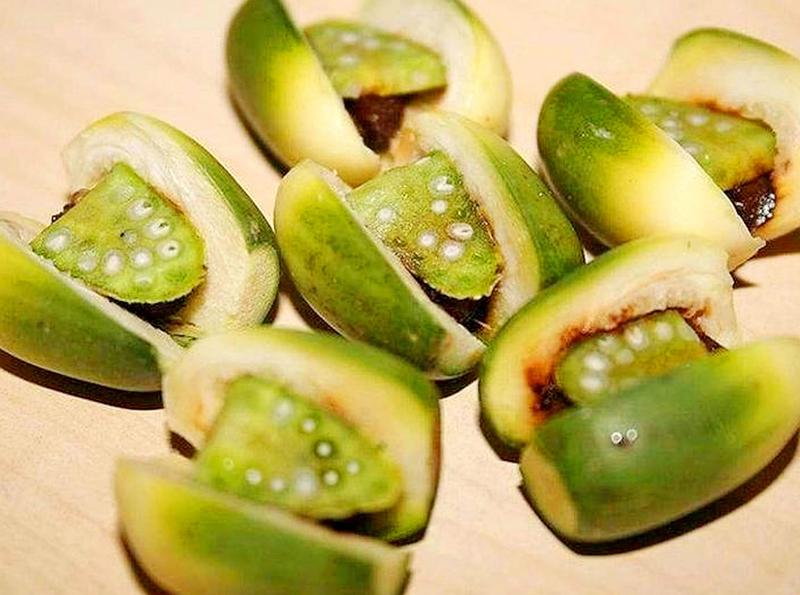People who chew on betel nuts are a high-risk group for contracting oral cancer. Betel nuts sold commercially, in addition to the areca nut — more commonly known as betel nut — usually also contain other ingredients including betel pepper, betel leaf, betel pepper vine, slacked lime and spices. Some people mistakenly believe it is these additives within betel nut preparations that cause damage to the mouth and throat. However guidance by the Ministry of Health and Welfare stresses that as early as 2003, the International Agency for Research on Cancer (IARC) had already proved arcea nut is a group one carcinogen. Despite this, many people — especially the young — are unaware of this fact. In light of this, the ministry has launched a new campaign to encourage members of the public to kick the habit of chewing on betel nuts early to avoid long-term damage to their health.
Research by the IARC has proved that areca nut contains arecoline and arecaidine that, when mixed with saliva in the mouth, adheres to cell membranes and produces a carcinogenic substance. This means that even without the addition of any additives, chewing on areca nut may cause cancer within multiple areas of the body including the mouth, pharynx and esophagus. This is the reason why the nut is categorized as a group one carcinogen.
To help the public prevent and identify oral cancer at an early stage, anyone aged 30-and-above and Aborigines aged between 18-to-30 who use (or have previously used) betel nut, or smoked tobacco, are entitled to an oral cancer screening once every two years. According to the ministry, regular screening allows medical professionals to detect over 5,000 cases of precancer and confirmed cancer every year. Early treatment can prevent the cancer from spreading or becoming worse, and the survival rate for early intervention is as high as 80 percent, the ministry says.

Photo: Wikimedia Commons 照片:維基共享資源
City and county-level health departments also organize ad-hoc education classes every year at hospitals and medical centers to help members of the public quit the betel nut habit. Hospitals also provide an outpatient service for quitting betel nuts, which people can make use of, to receive early treatment before it’s too late.
(Translated by Edward Jones, Taipei Times)
嚼食檳榔者是罹患口腔癌的高風險族群,市售的檳榔成份通常含有:檳榔子、荖花、荖葉、荖籐、石灰及香料等;有部分民眾誤以為是其他添加物才會造成口腔或咽喉受損,衛生福利部國健署強調,早在二○○三年國際癌症研究中心就已經證實,檳榔子為第一類致癌物,但還是有多數人尤其是青少年並不知道,有鑑於此,國健署再次呼籲,及早戒檳才是對自身健康有益處。

Photo courtesy of DaMou Entertainment 照片:大慕影藝提供
國際癌症研究中心證實,檳榔子本身含有檳榔素和檳榔鹼,會透過汁液接觸口腔黏膜而產生致癌物質,即便不含任何添加物都可能導致口腔、咽及食道等部位罹癌,故將檳榔子列為「第一類致癌物」。
國健署呼籲,民眾應預防及早期發現口腔癌,並免費提供三十歲(含)以上嚼檳榔(含已戒)或吸菸民眾、十八歲以上至未滿三十歲嚼檳榔(含已戒)原住民,每兩年一次口腔黏膜檢查;透過篩檢每年可發現超過五千名癌前病變及癌症個案,及早治療有效阻斷轉變惡化,早期存活率高達八成!
國健署補充說明,另各醫療院所或縣市政府衛生局,每年也會不定期開設戒檳班課程,並提供戒檳門診衛教服務,有需要的民眾可多加利用,別錯失早期治療的良機。

Photo: Liberty Times 照片:自由時報
(自由時報)

In an effort to fight phone scams, British mobile phone company O2 has introduced Daisy, an AI designed to engage phone con artists in time-wasting conversations. Daisy is portrayed as a kindly British granny, exploiting scammers’ tendency to target the elderly. Her voice, based on a real grandmother’s for authenticity, adds to her credibility in the role. “O2” has distributed several dedicated phone numbers online to direct scammers to Daisy instead of actual customers. When Daisy receives a call, she translates the scammers’ spoken words into text and then responds to them accordingly through a text-to-speech system. Remarkably, Daisy

Bilingual Story is a fictionalized account. 雙語故事部分內容純屬虛構。 Emma had reviewed 41 resumes that morning. While the ATS screened out 288 unqualified, she screened for AI slop. She could spot it a mile away. She muttered AI buzzwords like curses under her breath. “Team player.” “Results-driven.” “Stakeholder alignment.” “Leveraging core competencies.” Each resume reeked of AI modeling: a cemetery of cliches, tombstones of personality. AI wasn’t just changing hiring. It was draining the humanity from it. Then she found it: a plain PDF cover letter. No template. No design flourishes. The first line read: “I once tried to automate my

Every May 1, Hawaii comes alive with Lei Day, a festival celebrating the rich culture and spirit of the islands. Initiated in 1927 by the poet Don Blanding, Lei Day began as a tribute to the Hawaiian custom of making and wearing leis. The idea was quickly adopted and officially recognized as a holiday in 1929, and leis have since become a symbol of local pride and cultural preservation. In Hawaiian culture, leis are more than decorative garlands made from flowers, shells or feathers. For Hawaiians, giving a lei is as natural as saying “aloha.” It shows love and

1. 他走出門,左右看一下,就過了馬路。 ˇ He walked outside, looked left and right, and crossed the road. χ He walked outside and looked left and right, crossed the road. 註︰並列連接詞 and 在這句中連接三個述語。一般的結構是 x, y, and z。x and y and z 是加強語氣的結構,x and y, z 則不可以。 2. 他們知道自己的弱點以及如何趕上其他競爭者。 ˇ They saw where their weak points lay and how they could catch up with the other competitors. χ They saw where their weak points lay and how to catch up with the other competitors. 註:and 一般連接同等成分,結構相等的單詞、片語或子句。誤句中 and 的前面是子句,後面是不定詞片語,不能用 and 連接,必須把不定詞片語改為子句,and 前後的結構才相等。 3. 她坐上計程車,直接到機場。 ˇ She took a cab, which took her straight to the airport. ˇ She took a cab and it took her straight